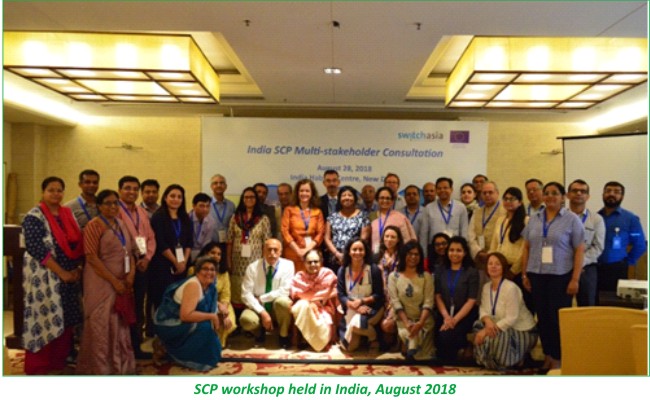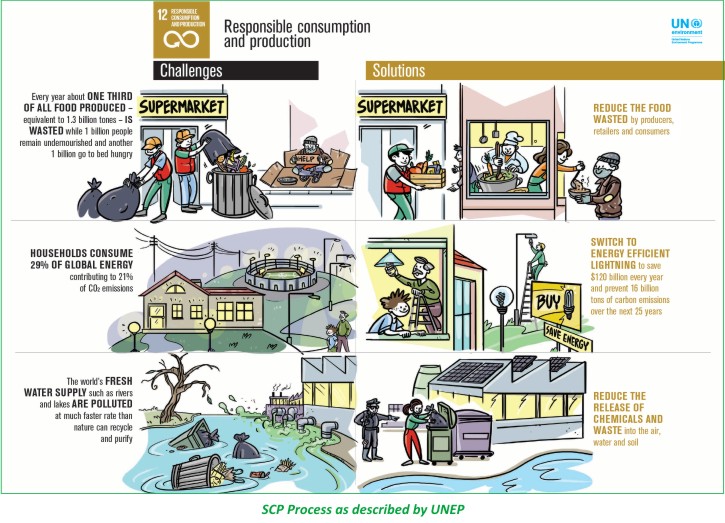|
Sustainable Consumption and
Production:
Economic development over the past 30 years has managed to lift millions out of poverty and expand the number of countries reaching middle-income status. However, it has also been accompanied by a wide array of negative environmental and social impacts, which now threaten to undermine, or even reverse, the progress that has been achieved to date. Our living environment, health, education, equity and empowerment are all adversely affected. Consumption of natural resources is continuing to rise globally and will accelerate further if projected growth rates of the world economy are realised. In parallel, a consequence of our current production systems is an explosion of waste and pollution further stressing environmental sinks. This is alarming for both non-renewable and renewable resources that depend on ecosystems, which can irreversibly collapse after overexploitation.
To address this complex situation a need was felt in the developed world in the early twenty-first century to rethink holistically the consumption and production system. Europe became the front runner in this and started a flagship initiative called ‘A Resource Efficient Europe’ in 2011 (European Commission, 2011, Road Map for Resource Efficient Europe). The initiative provided a long-term framework for actions in many policy areas, supporting policy agendas for climate change, energy, transport, industry, raw materials, agriculture, fisheries, biodiversity and regional development. This increased certainty for investment and innovation and ensured that all relevant policies factor in resource efficiency in a balanced manner. The objective of Sustainable Consumption and Production (SCP) is to create resource efficient production systems for sustainable goods and services (supply), coupled with shifts in consumption patterns and consumer behaviour (demand) to achieve sustainable development, economic growth and societal well-being (UNEP, 2015, A handbook for policy maker). Along with the European countries, Government of India also slowly started thinking of resource efficiency in consumption and production system from the last decade. Indian Resource Panel (InRP) was set up in 2015 with eminent scientists and experts under the Ministry of Environment Forest and Climate Change in the line of International Resource Panel (IRP) based in Europe (MOEFCC, 2015 report). A number of studies have been undertaken through different academia, bilateral agencies and government Institutions to explore the use of resources in different sectors.
Government of India has very recently come up with a resource efficiency draft policy which emphasises on a couple of major sectors like the automobile sector, plastic packaging, construction and demolition, solar photo voltaic sector, steel and aluminium sector to adapt the resource efficiency strategy. This draft policy is quite comprehensive and touches upon all the critical aspects of resource management and emphasises primarily on the sustainable management of natural resources. It also touches upon the issues of systemic approaches such as circular economy and consumption management. An in-depth analysis of the draft policy has revealed the following important observations:
Crucially, Sustainable Consumption and Production (SCP) can contribute substantially to poverty alleviation and the transition towards a low-carbon and green economy. SCP is one of the important SDG goals (Goal 12) which addresses issues across sectors and plays a vital role in achieving sustainability for all countries. ■
Gitika Goswami |

